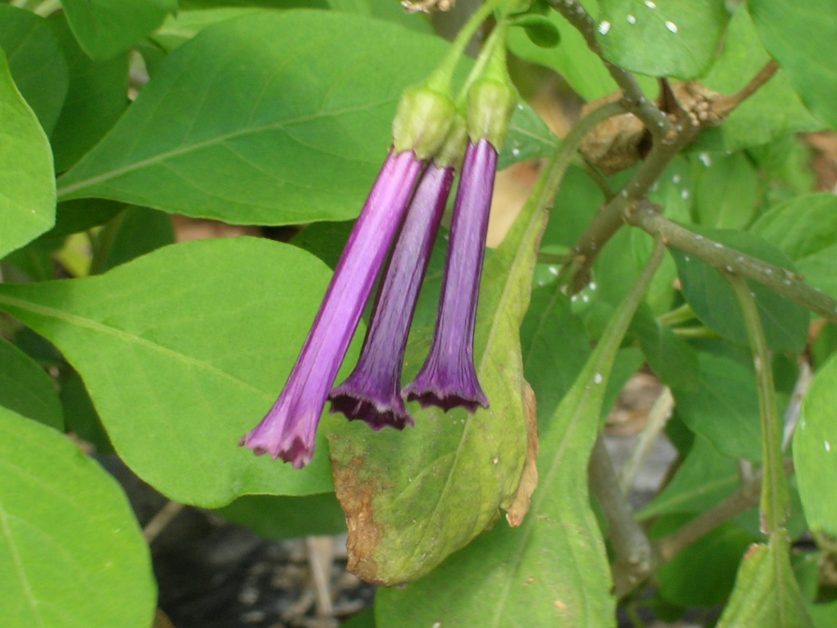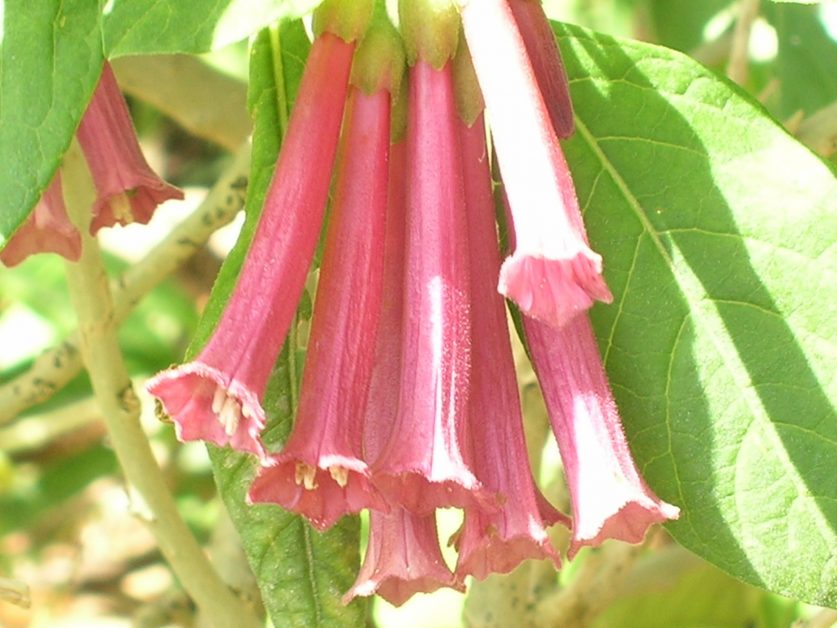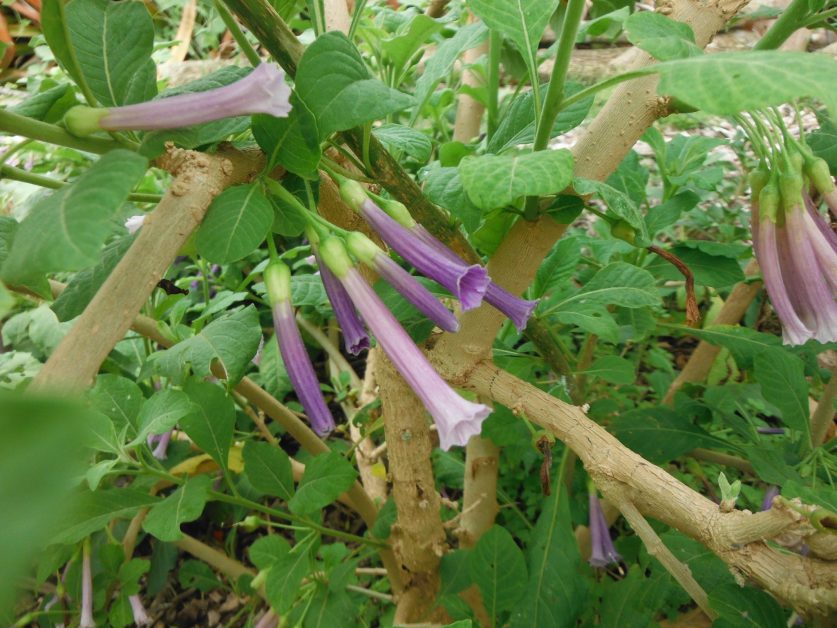Iochroma: A Very Down-to-Earth Plant
What are the odds that a plant native to elevations more than a mile above sea level in the Andes could grow well in southern Florida? Probably no better than for the lion to lie down with the lamb. But, amazingly, Iochroma cyanea beats those odds.
I. cyanea is endemic to the Ecuadorean Andes in the range between 5,850 and 8,125 ft. above sea level. By anyone’s definition, that’s cold country. Yet studies conducted at the USDA’s National Germplasm Repository in Miami demonstrated that various cultivars of the species are remarkably amenable to the lowland hot, steamy climate of southern Florida.
I. cyanea is a fast-growing shrub that matures to 4-5 ft. tall. Both its leaves and young stems are soft and pubescent, or fuzzy. Stems turn from green to gray-green with age. The plant’s pubescence alone gives this species good ornamental value, but its blooming characteristics are what make it special. Its flowers are long, tubular and pendulous, clustered in groups of 5-20 at branch tips, and in our region the species stays in bloom virtually year-round.
Iochroma is at its showiest when grown in full sun. It should be planted in good organic material. Ample moisture is important, but watering can be reduced during the winter months. Regular fertilization with a ‘palm special’ fertilizer is also recommended. It is advisable to prune plants back annually by one-third to one-half. That practice not only works as a check on the species’ rapid growth, but encourages even more prolific blooms since its flowers develop on new wood.
I. cyanea also performs well as a container plant. When a potted specimen becomes rootbound, it can develop woody stems and start to lose lower leaves. However, the plant can be reinvigorated by cutting the stems back hard to just a few nodes, and thinning the dense rootball before repotting it in a fresh soil mix.
Richard Lyons’ Nursery grows 3-gal. Iochroma cultivars that produce either pale blue or red flowers.
- Iochroma cyanea (Deep Purple Iochroma)
- Iochroma cyanea (Pink Iochroma)
- Iochroma cyanea (Purple Iochroma)



